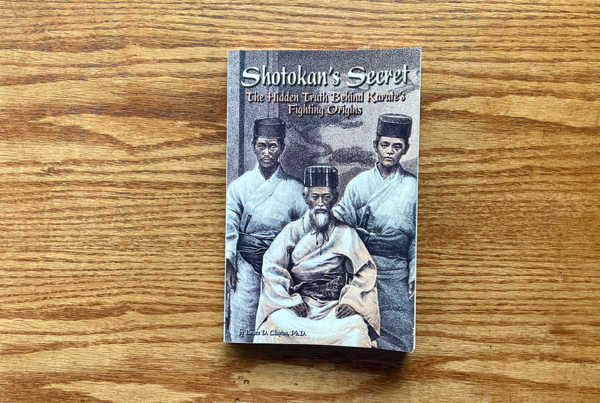One of the most common questions I hear is, “Should I enroll myself or my child in taekwondo or karate?”
The short answer is: It doesn’t matter.
I’m not trying to be dismissive.
Time and again it’s been said that the art doesn’t matter so much as the individual’s relationship to his or her instructor.
In this post, I’ll call out what I have found to be the main commonalities and differences between karate and taekwondo.
Please note: These are my (admittedly generalized) personal experiences.
My experiences may not reflect upon all karate and taekwondo schools—personally, you might find that I have a bias toward karate because I teach it and don’t have a ton of formal experience with taekwondo.
If you are interested in practicing one or both arts, please inquire with an instructor or school near you to understand their philosophies about teaching and what they emphasize.
What Karate & Taekwondo Have In Common
First, I’d like to note that I tend to look at what martial arts have in common instead of their differences.
Both taekwondo and karate feature the following:
- Forms: Forms are a way to methodically capture the essence of a martial art. Each movement has a practical self-defense application behind it. The specific forms practiced will vary between karate and taekwondo, but they also vary between different karate schools and different taekwondo schools.
- Sparring: Karate and taekwondo both prominently feature sparring, though the specific rules of each type of sparring are different, as will be explained below.
- Weapons: Both martial arts allow and encourage incorporating weapons practice as a way to enhance students’ knowledge.
- Breaking: One way both arts test students’ power and focus is through breaking wooden boards, concrete patio blocks, or other odd objects (like baseball bats).
Further, karate and taekwondo are both full-body aerobic workouts involving punches and kicks, as well as calisthenics like jumping jacks, pushups, squats, burpees, lunges, and more.
Finally, karate and taekwondo both require patience.
Black belts are awarded only after years of practice and dedication.
How Karate & Taekwondo Differ: Their Origins
Most martial arts we typically think of developed differently throughout Asia over hundreds of years.
Karate flourished on the island of Okinawa during the 1600s and onward.
Later, in the 1900s, karate’s popularity took off in Japan once a safer version was introduced into the school system.
Meanwhile, taekwondo developed largely as a result of World War 2, when Korean martial artists were influenced by the Japanese occupation.
How To Tell Karate & Taekwondo Apart If You Didn’t Know Any Better
Let’s say you’ve never experienced martial arts before, and suddenly, you’ve been plopped into a local gymnasium to watch a competition.
In general, you can identify a karate practitioner in the following ways:
- Typically, karate forms are more diverse than taekwondo forms. Many taekwondo forms follow an H or an I pattern on the floor if you were looking from above. Karate forms don’t have such a uniform pattern about them.
- You’ll probably see more punches in karate. Taekwondo often features more high kicks.
- Karate practitioners usually wear a uniform that folds over in front. I’ve noticed many taekwondo practitioners use a pullover top. This may be less of a stereotype than the others, but it’s something I’ve picked up on.
Meanwhile, taekwondo…
- Features kicks more than punches. One highlight of taekwondo I admire is their dedication to stretching and flexibility. Their kicks are often very powerful, even at great heights relative to their physical stature.
- Focuses more on sparring. That’s not to say karate doesn’t, but again, these are my perceptions.
Sparring Rules For Karate And Taekwondo
One of the biggest differences between karate and taekwondo is their sparring rules.
Here, I’ll provide a basic overview of each style’s general sparring rules.
However, please refer to each individual school or competition for their unique rule set.
| Karate | Taekwondo | |
| Type of Sparring & Definition | Point: Competitors aim to receive 3 points for victory. The match breaks after the center judge calls for a score. | Continuous: Competitors aim to get as many points as possible in 2 rounds of 1 minute (colored belts) or 2 minutes (black belts) with a rest in between each round. |
| When Does The Match End? | After a competitor scores 3 points, or time is called, or upon disqualification | When time is called, or upon disqualification |
| What’s Allowed | Punches and kicks to the body. Strikes to the head and groin vary by competition and school. Sweeps and traps are sometimes allowed. | Punches to the body only. Kicks to the head and the body covered by a chest protector (hogu). |
| What’s Not Allowed | Throws, chokes, excessive contact to the head or face. Strikes to the spine, arms, or legs. | Throws, chokes, excessive contact to the head or face. Strikes to the spine, arms, or legs. Punches to the head. |
Again, please refer to your school or upcoming competition for their specific rules.
Many follow rules sanctioned by a larger governing body.
Is There A Difference Between Karate And Taekwondo?
Of course there is.
But, please don’t judge each art based entirely on what you read here or online.
In fact, it’s not really a question of karate vs. taekwondo at all.
Visit a school in person to learn more about their training methodologies and how they can benefit you or your child.

Photo by Sam Moghadam Khamseh on Unsplash




